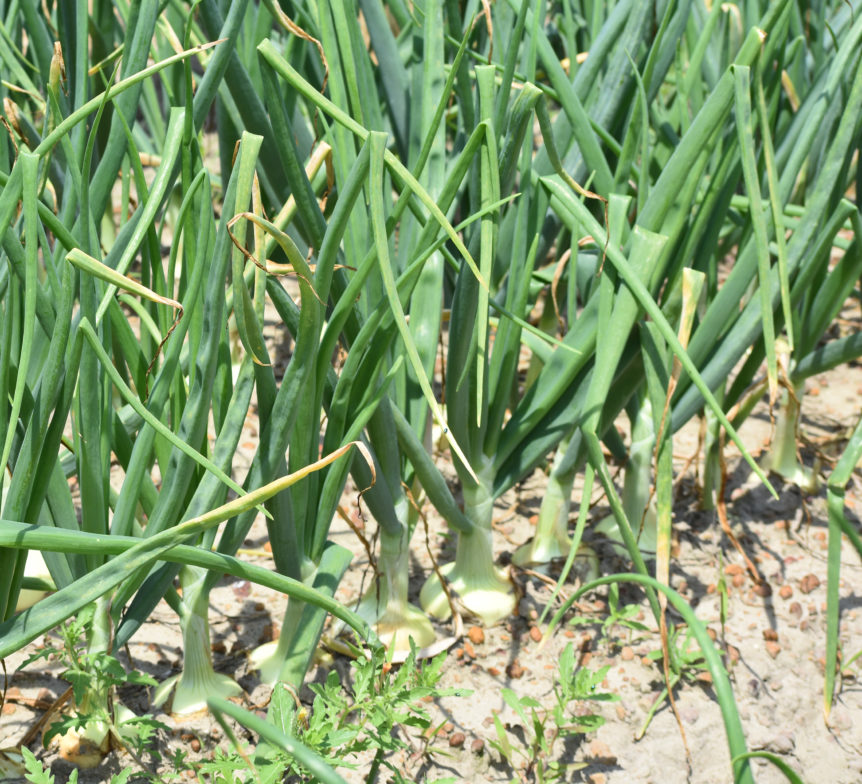
By Clint Thompson
University of Georgia research in Vidalia onions has yielded a new approach to planting the crop.
Ted McAvoy, University of Georgia Extension vegetable specialist, wants growers to maximize their area to produce more plants per acre. Because of the threshold of the recommended spacing between plants, McAvoy offered an alternative method.

“Most all of the work that’s done typically would be using your same row spacing. The limitation is your equipment with your row spacing. Most of the plant population densities have manipulated in-row spacing, the space between plants in the row. But they kept the same number of rows on the bed top,” McAvoy said. “What we did differently was double row. We essentially had eight rows on the bed top.
“Essentially we got more rows adopting a twin-row configuration.”
He added that previous research established that if a grower decreased the distance between plants to less than four inches, they would produce small bulbs.
“But there’s still big gaps between the rows, so we were able to put more rows. It increased the plant population, increased marketable yield and increased jumbo bulbs,” McAvoy said. “It’s going to be more efficient. You’re going to have more plants per acre. You’re going to put the same amount of fertilizer per acre; same amount of pesticides per acre, and you’re producing more onion on less ground.
“You are using less space, so it has to pay off.”
Standard Recommendation
The standard recommendation is 90,000 to 100,000 plants per acre. McAvoy exceeded that number while increasing the quality and quantity of the crop.
“I found that we could increase plant populations to about 115,000 plants per acre while increasing marketable yields and desirable bulb sizes, which are your jumbo size bulbs,” McAvoy said.
Additional research is required, specifically to see what onion varieties are better suited to high planting population densities.










